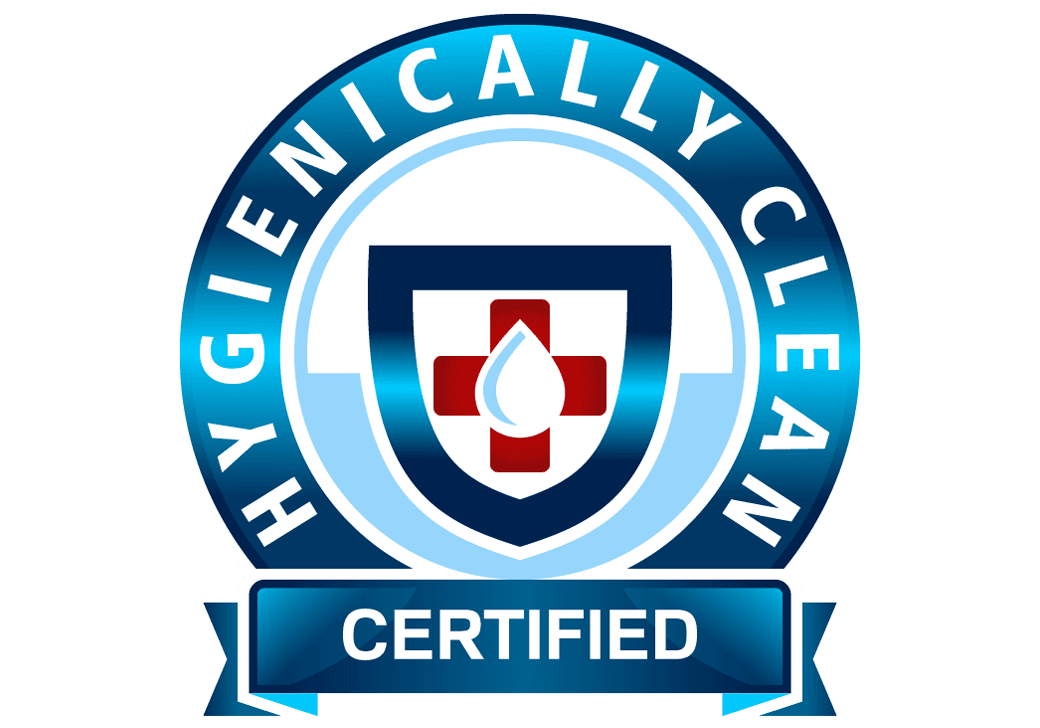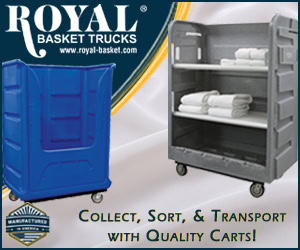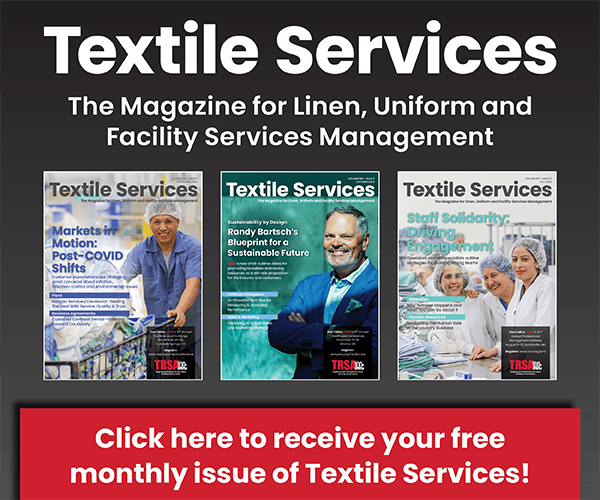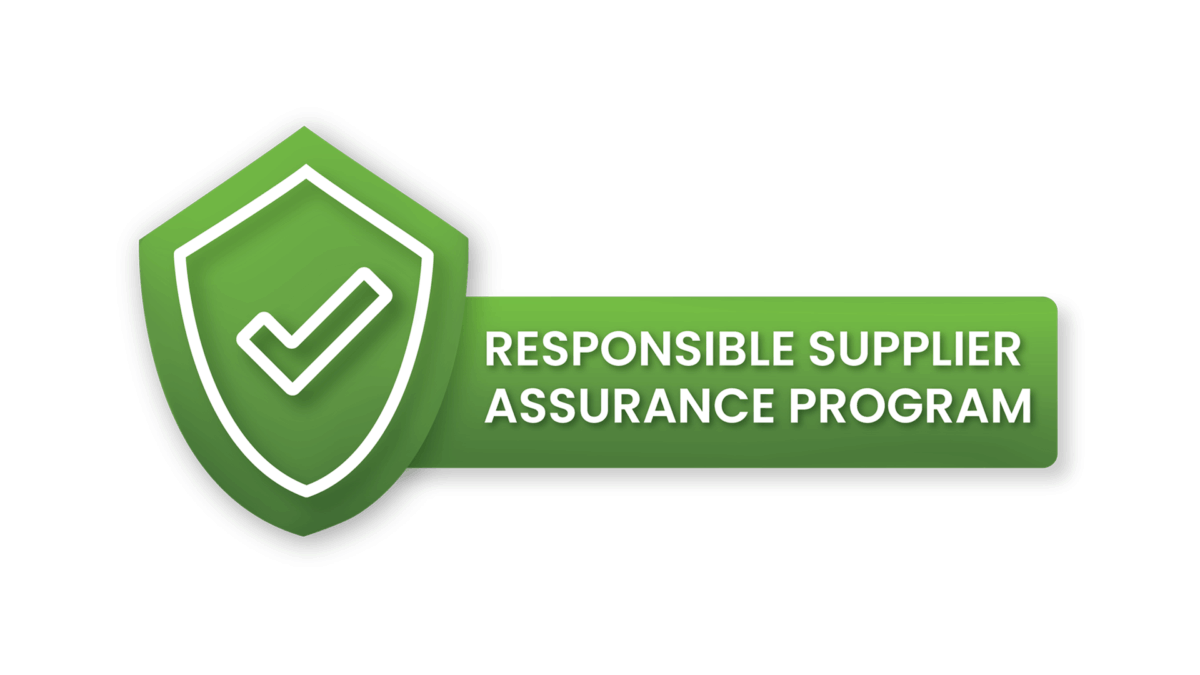Ensuring the cleanliness and safety of textiles is critically important, especially in industries like healthcare, hospitality, and food safety and service. TRSA plays a key role in setting the standard through its Hygienically Clean certification. Yet despite its growing recognition, there are still common questions about what the certification is and isn’t. Here are five essential facts everyone should know about TRSA and its Hygienically Clean Healthcare certification.
Fact No. 1: Robust quality-assurance program. Every Hygienically Clean Healthcare certified facility must maintain a quality-assurance (QA) manual to document and implement best-management practices that ensure compliance with all federal, state and local regulations. The manual must also emphasize processes that incorporate applicable infection-control guidelines from the U.S. Centers for Disease Control and Prevention (CDC) and recommended practices from The Joint Commission related to the handling and processing of healthcare textiles. The manual details how the facility complies with each best-management practice, with documentation of protocols and processes that serve as a central focus during TRSA audits. This ensures hygienically clean textiles are produced consistently and in accordance with recognized standards.
Fact No. 2: Rigorous quality-assurance verification process. Hygienically Clean audits evaluate a facility’s standard operating procedures (SOPs) and verify the implementation of best-management practices and processes outlined in the quality-assurance manual to minimize risk. Auditors also assess practices related to healthcare textile handling and processing for adherence to CDC guidelines. Audits confirm that:
- Employees are properly trained and protected
- Managers understand and comply with legal requirements
- The facility meets OSHA standards
- Operational processes are effective and sustainable
Hygienically Clean audits consist of two key steps. First, a review of the quality-assurance manual conducted by the auditor prior to the on-site assessment. Second, a comprehensive facility audit that evaluates the SOPs and practices in place, measured against the manual and the Hygienically Clean standard.
Fact No. 3: Ongoing certification program enhancement. Hygienically Clean certification has strengthened and aligned its process with accreditation standards set by the American National Standards Institute (ANSI), reinforcing credibility and trust across the industry. According to Samlane Ketevong, TRSA’s senior director for certification & accreditation:
“Earning ANSI accreditation is a rigorous process that validates both technical competence and management systems. Organizations must demonstrate inspector proficiency, quality assurance and impartial practices, supported by internal audits and management reviews. This comprehensive review ensures accredited bodies meet the highest standards of credibility, reliability and trust.”
The Hygienically Clean certification is the only third-party, independent certification available that requires verification of processes, best practices and the cleanliness of a laundry’s linens, garments and other textiles through microbiological testing.
Fact No. 4: Hygienically Clean certification is the industry’s most-recognized standard. TRSA members process more than 90 percent of healthcare linens, garments and other reusable textiles. During the past decade, TRSA’s Hygienically Clean certification program has grown into the largest global industry standard for healthcare and other reusable textile cleanliness with more than 225 certified facilities. Microbiological testing is critical and a key component of our certification framework.
Fact No. 5: A united industry is a strong industry. TRSA is consistently working to unify the linen, uniform and facility services industry through Laundry Hill Day with ALM, ARTA, CSCNetwork, ITRA and TCATA, as well as partnerships with ALM to educate end-users through LinenCares and relations with APIC, AHE and other healthcare-related organizations. When the industry speaks with one voice, it builds greater trust with customers, regulators and the public.
“We believe it is important to have fact-based conversations about Hygienically Clean to help build the industry’s credibility with its customers,” said Joseph Ricci, TRSA president & CEO. “That’s why we focus on the benefits of using Hygienically Clean laundries based on the combination of inspections by independent auditors, process validation, quality-assurance (QA) manuals and quarterly testing to ensure cleanliness standards.”
As the leading voice for the linen, uniform and facility services industry, TRSA is committed to advancing fact-based conversations with policymakers and industry customers. That’s why TRSA and its members invest heavily in advocacy efforts to increase the number of reusable textiles within critical industries like healthcare.
TRSA also invests substantial resources in research, advertising and outreach to healthcare customers and organizations to increase awareness of the benefits of reusable healthcare textiles that ultimately reduce costs, improve safety, improve supply chains and provide increased environmental sustainability. Results of these efforts can be found in issues of Textile Services magazine.
Sign Up For Our Newsletter
Receive the latest updates on the linen, uniform and facility services industry from TRSA delivered straight to your inbox.








